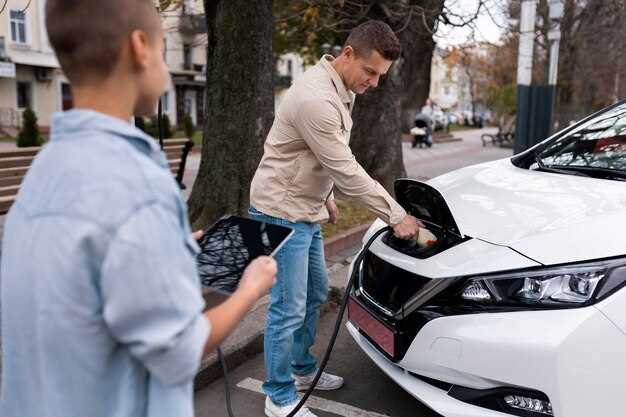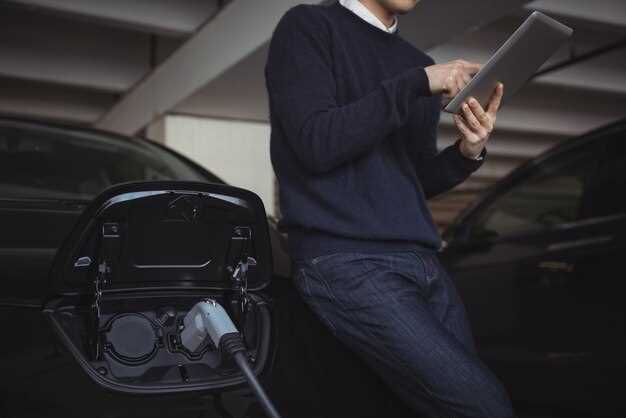Common Hybrid Car Problems and How to Fix Them

Hybrid cars have gained immense popularity due to their eco-friendly nature and fuel efficiency. However, like any other technology, they are not without their challenges. Understanding the common issues associated with hybrid vehicles is essential for both current owners and potential buyers. In this article, we will explore these issues in detail, providing insights into their causes and effective solutions.
One of the most prevalent issues faced by hybrid car owners is the degradation of battery performance. Over time, the efficiency of the hybrid battery can decline, leading to reduced fuel economy and potential costly replacements. Additionally, hybrid systems are often more complex than traditional vehicles, which can lead to unique mechanical problems that require specialized knowledge for repair. Identifying these issues early can mitigate long-term damage and expense.
Other common problems include brake system issues and software glitches. The regenerative braking system, while beneficial for fuel savings, may present complications that affect the vehicle’s handling and safety. Furthermore, as hybrid cars become increasingly reliant on technology, software-related problems can also arise, impacting the overall driving experience. This article will provide practical solutions to these problems, ensuring that hybrid owners can maintain their vehicles’ performance and longevity.
Battery Degradation and Maintenance Tips
Battery degradation is a significant concern for hybrid car owners, as it can impact both performance and efficiency. Lithium-ion batteries, commonly used in hybrid vehicles, can lose their capacity over time due to various factors such as temperature extremes, charging habits, and age. Regular maintenance and mindful usage can help prolong battery life and maintain efficiency.
To combat battery degradation, ensure that your hybrid car’s battery stays within ideal temperature ranges. Excessive heat or cold can accelerate wear. If possible, park in shaded areas or garages during extreme weather. Additionally, try to avoid leaving your vehicle parked for extended periods with a fully charged or completely depleted battery.
Charging habits also play a crucial role in battery longevity. It’s advisable to keep the battery charge between 40% and 80% whenever possible. Frequent full charges or deep discharges can diminish battery capacity over time. If your hybrid allows for it, use a smart charging system that automatically optimizes the charging cycles based on your driving patterns.
Regular maintenance checks are essential. Schedule battery inspections with certified service centers that can conduct diagnostic tests to identify any issues early. They will also check for software updates that can enhance battery performance. If the manufacturer recommends any specific maintenance routines, ensure you adhere to them for optimal battery health.
Finally, keeping your hybrid in good working condition overall will benefit the battery. Address any issues related to the engine, electrical system, or hybrid components promptly. A properly functioning vehicle reduces the demand on the battery, contributing to a more extended lifespan and enhanced reliability.
Understanding Brake System Problems in Hybrids
Hybrid vehicles utilize a unique braking system that often combines traditional hydraulic brakes with regenerative braking technology. While this design offers benefits in fuel efficiency and performance, it can also lead to specific brake system issues.
One common problem in hybrid braking systems is the wear of brake pads and rotors. Despite regenerative braking reducing reliance on mechanical brakes, they still undergo significant stress. Drivers may notice decreased responsiveness or a grinding noise when braking, indicating that the brake pads are worn and need replacement.
Another issue involves the brake booster, which can sometimes fail due to electrical malfunctions. This failure may result in a hard brake pedal, making it difficult to stop the vehicle effectively. Regular diagnostic checks can help identify electronic issues before they escalate.
The brake fluid in hybrid vehicles must also be monitored. If the fluid becomes contaminated or degrades, it can lead to reduced braking efficiency. This risk is heightened in hybrids due to their complex braking systems, which can generate higher operating temperatures. Regular fluid checks and changes according to the manufacturer’s recommendations are essential for maintaining optimal braking performance.
| Brake Issue | Symptoms | Possible Solutions |
|---|---|---|
| Worn Brake Pads | Grinding noise, reduced responsiveness | Replace brake pads and rotors as needed |
| Brake Booster Failure | Hard brake pedal, difficulty stopping | Conduct electrical diagnostics, replace the booster |
| Contaminated Brake Fluid | Poor braking performance | Regularly change brake fluid, inspect for contamination |
In conclusion, understanding these brake system problems is vital for hybrid car owners. Promptly addressing these issues not only enhances safety but also ensures the longevity and reliability of the vehicle’s brake system.
Addressing Overheating Concerns in Hybrid Vehicles
Overheating is a critical issue that can affect the performance and longevity of hybrid vehicles. Understanding the causes and implementing effective solutions can help homeowners protect their investment and maintain optimal functionality.
Common causes of overheating in hybrid cars include:
- Cooling System Malfunction: Inefficiencies in the cooling system can lead to excessive heat buildup.
- Battery Issues: Hybrid batteries can generate significant heat during operation, particularly if they are aging or malfunctioning.
- Engine Performance Problems: Issues such as coolant leaks, failed thermostats, or clogged radiators can contribute to overheating.
- Driving Conditions: Frequent stop-and-go traffic or towing can place additional load on the engine and hybrid system, leading to overheating.
To effectively address overheating concerns, consider the following solutions:
- Regular Maintenance: Schedule routine check-ups for your vehicle’s cooling system, battery health, and engine performance. This includes checking coolant levels, radiator function, and any signs of leakage.
- Monitor Battery Temperature: Use onboard diagnostic tools to keep track of battery temperature. If temperatures exceed normal ranges, investigate for potential issues or replacements.
- Use Quality Coolants: Ensure that you are using the manufacturer-recommended coolant, which is tailored for your hybrid model, to prevent overheating.
- Avoid Overloading: Be mindful of the weight carried in the vehicle and avoid excessive towing to reduce strain on the hybrid system.
- Consider Upgrades: If your vehicle frequently overheats, consider upgrading components like the radiator or adding supplementary cooling systems that enhance heat dissipation.
By being proactive and addressing these factors, hybrid vehicle owners can mitigate overheating risks and ensure a smooth driving experience.
Troubleshooting Charging System Failures
A hybrid vehicle’s charging system is essential for maintaining battery performance and overall vehicle efficiency. When issues arise, it can lead to decreased performance or even render the vehicle inoperable. Here are some common steps to troubleshoot charging system failures.
1. Check Battery Health
The first step is to assess the health of the hybrid battery. Use an OBD-II scanner to read diagnostic trouble codes (DTCs) related to the battery. If the battery is weak or failing, it may require replacement. Pay close attention to signs such as reduced electric-only range or warnings on the dashboard.
2. Inspect Charging Cables and Connectors
Examine all charging cables and connectors for any visible signs of damage, such as fraying or corrosion. Poor connections can lead to inefficient charging or complete charging failure. Clean any corroded terminals and replace damaged cables as necessary to ensure a stable connection.
3. Test the Charging System Components
Utilize a multimeter to test the voltage output of the charging components, including the inverter and DC-DC converter. A healthy system should provide voltage within the manufacturer’s specifications. If any component underperforms, it may need repair or replacement.
4. Evaluate the Charging Station
If issues arise while using a home charging station, check the outlet and wiring for faults. Test the station with another hybrid vehicle, if possible, to determine whether the issue lies with the car or the charging station. Ensure that your charging station is suitable for your hybrid model.
5. Review Software Updates
Hybrid vehicles often rely on software for efficient charging. Check if the vehicle manufacturer has released any software updates. These updates might address bugs in the charging system or optimize performance and efficiency. Regular updates can prevent issues from arising.
6. Consult a Professional Technician
If all else fails, it’s advisable to seek professional assistance. Trained technicians possess the necessary tools and expertise to diagnose complex charging system failures accurately. They can identify less obvious issues and provide solutions that may not be apparent to the average owner.
Troubleshooting charging system failures in hybrid vehicles requires methodical examination and testing of various components. By following these steps, you can effectively identify and resolve issues to ensure reliable vehicle operation.
Resolving Performance Issues During Cold Weather
Cold weather can significantly impact the performance of hybrid cars, primarily due to battery efficiency and engine responsiveness. To ensure optimal functionality during winter months, several strategies can be implemented.
First, it is crucial to maintain the battery’s health. Cold temperatures can reduce battery capacity, leading to decreased acceleration and overall performance. Regularly checking the battery’s state of charge and ensuring it is well insulated can mitigate performance drops. Using a battery warmer can also help maintain optimal operating temperatures.
Secondly, preconditioning the vehicle before use is beneficial. Preconditioning involves heating the cabin and battery while the car is still plugged in, which helps maintain battery performance and comfort. This can be done remotely through a smartphone app in many hybrid models.
Moreover, using the vehicle’s “Eco” mode sparingly in extreme cold may enhance performance. While Eco mode helps improve fuel efficiency, it can limit engine responsiveness during startup. Switching to a normal or sport mode can provide more immediate power when necessary, particularly during acceleration from a stop.
Additionally, tire maintenance is vital during winter months. Cold weather can decrease tire pressure, affecting traction and handling. Regularly checking tire pressure and ensuring they are winter-ready, with appropriate tread patterns, can enhance performance and safety.
Lastly, keeping the fuel tank at least half full can help prevent fuel line freeze and ensure that the vehicle operates efficiently. Using winter-grade fuel may also improve engine performance in extremely low temperatures.
By adopting these practices, hybrid vehicle owners can effectively reduce performance issues associated with cold weather, ensuring a smoother driving experience year-round.
Managing Software Updates and Technical Glitches

Hybrid cars rely heavily on software systems to manage various functions, including energy efficiency, battery performance, and overall vehicle diagnostics. Regular software updates are crucial to ensure optimal performance, security, and bug fixes. However, issues may arise during updates, leading to glitches that can impact driving experience.
To effectively manage software updates, manufacturers usually provide over-the-air (OTA) updates. These updates can be scheduled automatically, ensuring that drivers receive the latest enhancements without needing a dealership visit. However, users should ensure that their vehicle is connected to a stable Wi-Fi network during the update process to avoid interruptions that can lead to further technical issues.
In case of experiencing technical glitches after a software update, the first step is to reset the vehicle’s infotainment system, as this can resolve minor hiccups. Most hybrid cars have a specific reset function, accessible through the user manual. If the problem persists, consulting the manufacturer’s customer service or local dealership can provide further assistance and potential troubleshooting steps.
In addition, keeping track of updates and their corresponding release notes can help drivers understand the benefits or fixes included in each version. Regular engagement with user forums and online communities can also be beneficial, enabling hybrid car owners to share experiences and solutions regarding technical glitches.
Lastly, it is essential to maintain regular servicing and check-ups with authorized service centers, as they can provide professional diagnostics and solutions for more complex software-related issues. This proactive approach can significantly reduce the occurrence of technical glitches and enhance the longevity of the hybrid vehicle.

